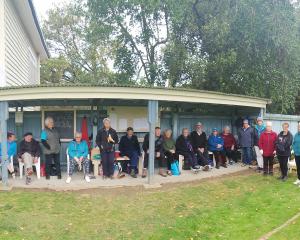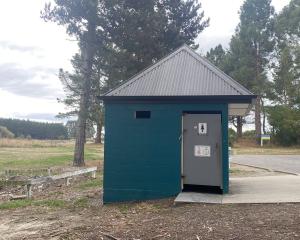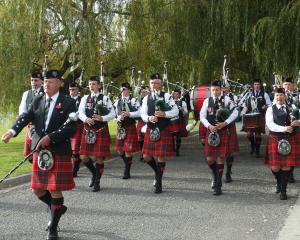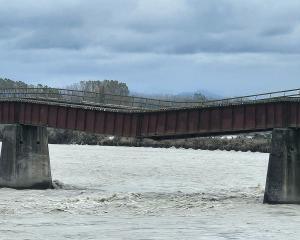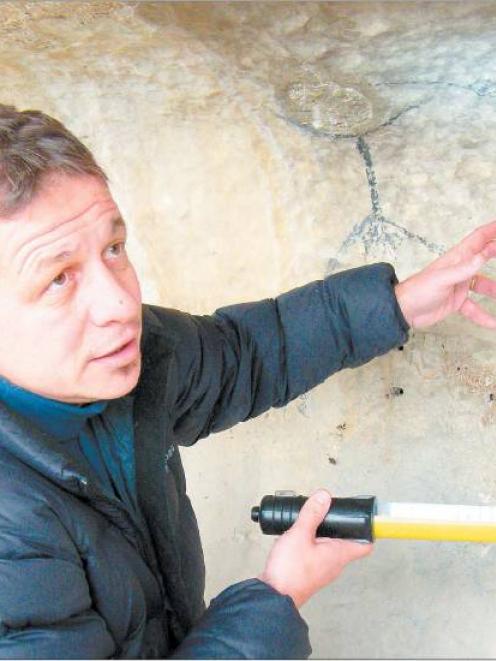
Maori rock art is found at more than 550 sites in the South Island and more lies hidden, waiting to be discovered. More than 95 per cent of the art is located on private land. Most sites are rarely visited.
Rock art drawings range from a single faded symbol on a weatherbeaten rock to murals up to 20m long, drawn under the overhangs of limestone outcrops.
The images are especially prolific in South Canterbury and North Otago. The density of sites in zones near Pleasant Point and Oamaru is astonishing. For example, there is a cluster of 48 sites in a 2sq km zone near Pleasant Point. Virtually every limestone outcrop has drawings.
For the past three years, a French anthropologist and behavioural archaeologist, Dr Yann-Pierre Montelle, has been methodically mapping, describing and photographing the South Island's Maori rock art.
He does this fieldwork for the Ngai Tahu Maori Rock Art Trust, a non-profit organisation established to protect and manage the sites. The project is called Simrap (South Island Maori Rock Art Project) which involves using the data to create an electronic database that will form the basis of protection and conservation measures at the sites and a resource for ongoing research.
The trust is developing a tourism operation, the Maori Rock Art Centre (expected to open in Timaru's Landing Service building early next year), to provide funding for this work.
Dr Montelle (44) has lived in Christchurch with his New Zealand wife for the past three years. He first learned about Simrap from Lady Fiona Elworthy, whom he met while visiting a rock art site on her family's Craigmore Station soon after arriving in the country.
A specialist in human behaviour in caves, he lectures on cave art archaeology and human evolution at the University of Canterbury, as well as spending about three months a year researching rock and cave art in Australia and Europe.
He believes the reason why New Zealanders know so little about Maori rock art is that it was discovered by Europeans at a time of ‘‘antiquarianism'', when the drawings were dismissed as ‘‘doodles'', difficult to understand and a less interesting manifestation of Maori culture than artefacts like tools or sites such as pa.
Although fieldworkers had collected pieces since the late 19th century, they were not considered beautiful enough to be prominently displayed in museums, he said.

‘‘There has been very little work done here, so there is nothing to show.
‘‘On the world map of rock art, there is no dot on New Zealand. One of my jobs is to put the dot on that map.
‘‘People around the world are just starting to get very interested in it.''
The only reference book on Maori rock art - Michael Trotter and Beverley McCulloch's 36-year-old Prehistoric Rock Art in New Zealand - was dated, Dr Montelle said.
Dr Montelle will contribute to a couple of books being produced by the trust over the next few years, one of which he expects will be a photographic work accessible to non-academic readers.
Dr Montelle's fieldwork is building on the work started in 1990 by archaeologists Brian Allingham and Atholl Anderson.
So far he has visited and catalogued about 200 of the South Island's 550 known sites. He usually spends three days at a time in the field, spending anywhere between an hour to two days mapping and documenting a single site.
Using a GPS receiver and laser distance meter, he fixes the location of each site, then collects distance and angle data, all of which is transmitted to a wireless handheld computer.
At the end of each trip, back in the office, he uploads the data on to a computer to create a map that shows the position of each drawing within a site, then plots the sites on a Google Earth map.
This is complemented by high-resolution photographs and detailed written descriptions of each drawing.
Within two years, he expects to have mapped all known sites.
The real fun would begin when the database was complete, Dr Montelle said. It would form the basis of attempts to answer the big questions hanging over the rock art: Who drew them? When? And why?
The drawings might have started with the first wave of people into the South Island between 700 and 1000 years ago.
Although it was impossible to know their intent, Dr Montelle thought their early motive to draw was purely functional, to make ‘‘spatial markers''- in other words, road signs.
‘‘People who are walking the land, looking for things, finding things - you create a story for a specific area to help you remember it.''
He believed the markers were gradually elaborated on, made to depict local mythology and, perhaps, the genealogy of the sites' visitors.
Interpreting the meanings of drawings made after contact with Europeans could be informed by the memories of descendants living today.
However, drawings made before this were beyond interpretation, Dr Montelle said.
The best academics could do was make propositions and test these with scientific analysis.
One of the most exciting prospects for the future of research into Maori rock art was the opportunity to situate it in an international context, he said. Comparative analysis of rock art found on islands in the Pacific Ocean could improve knowledge of migratory patterns. One of the best ways of learning more about the image makers and their movements was to analyse the charcoal and red and yellow ochre pigments they used, he said.
Some drawings were made using dry pigments, which had made them especially prone to disintegration and fading.
Other drawings were made with oil binders mixed into the pigments to make them longer lasting, suggesting a desire on the part of the image makers to pass on their stories to their descendants.
Because Dr Montelle visited sites that were rarely visited, he approached them with the attitude of a forensic analyst.
‘‘When I go to a site, I more or less go to a crime scene.''
There were no big clues, so he looked for the little clues - to electron microscopic level.
Dr Montelle said South Canterbury people should treasure the rock art as a fragile cultural asset.
‘‘It gives South Canterbury a universal dimension, because rock art is universal.
‘‘It's a proto language - the first form of language that was purposely placed to be read. If you don't protect it, it's gone.''
Because of the natural ‘‘exfoliation'' of limestone, many of the drawings were in an advanced state of degradation. Unlike the cave drawings of Australia and Europe, they were exposed to the weather and would slowly continue to fade away. Few were fenced off from stock, which sheltered in the same overhangs the image makers chose for their drawings, he said.
Dr Montelle said Timaru's Maori rock art centre would help Ngai Tahu remedy this lack of protection, both financially and by raising awareness.
Although he believed being a foreigner was an advantage for his fieldwork, he believed the only people who could fully appreciate the rock art were the descendants of those who created it.
‘‘It must be amazing to come and see a moment in time of your ancestor, just a few generations down the line.''




